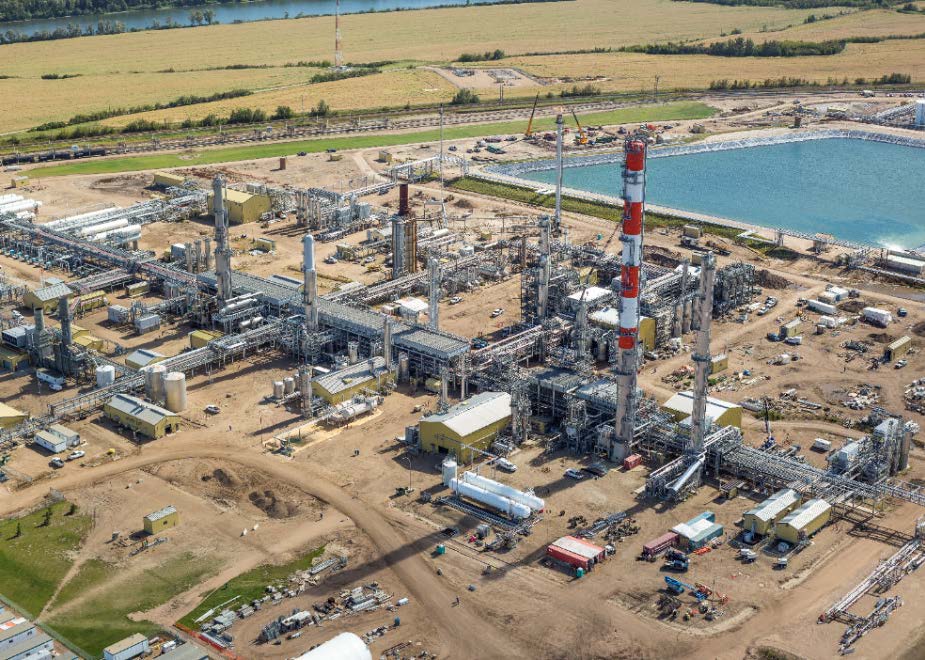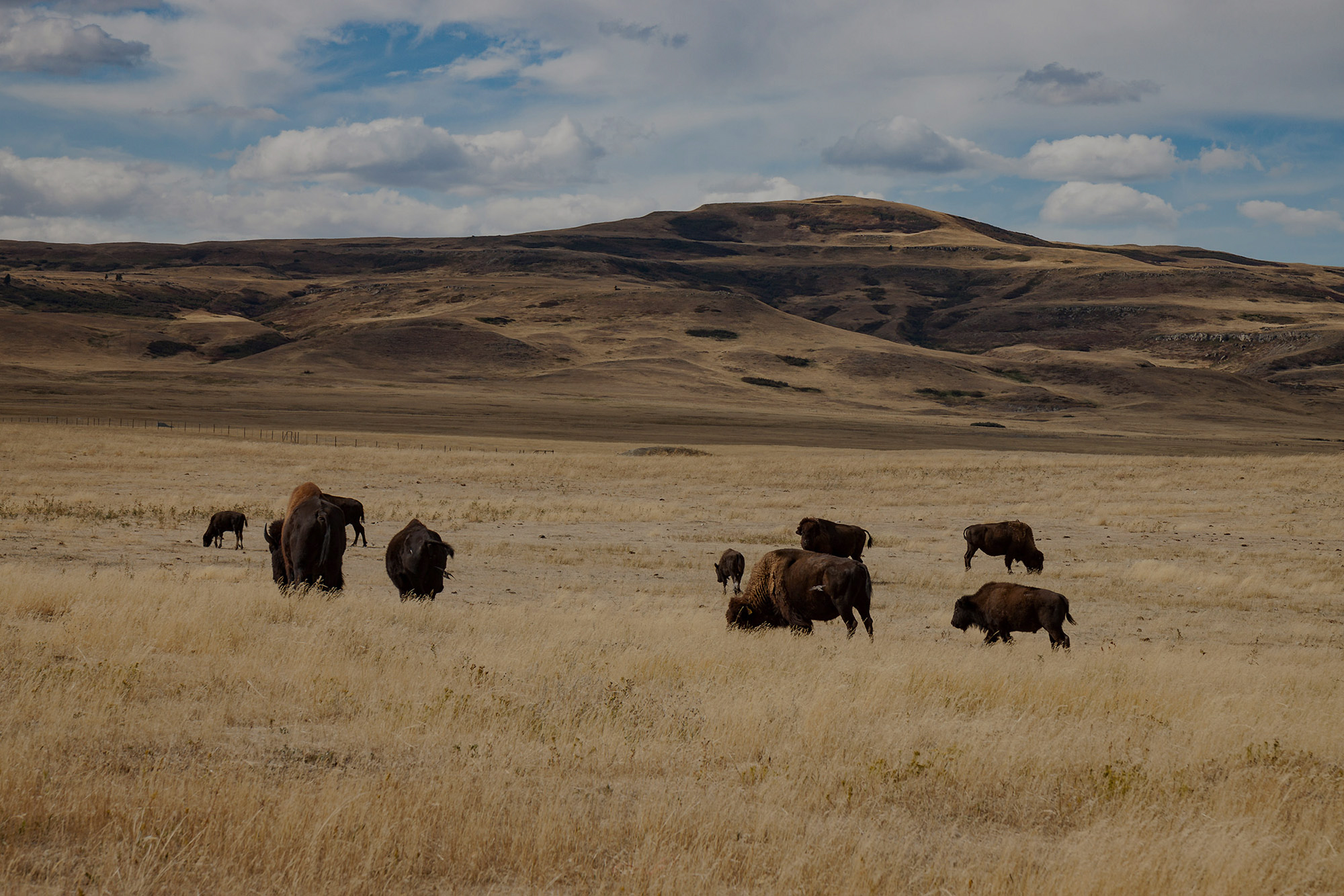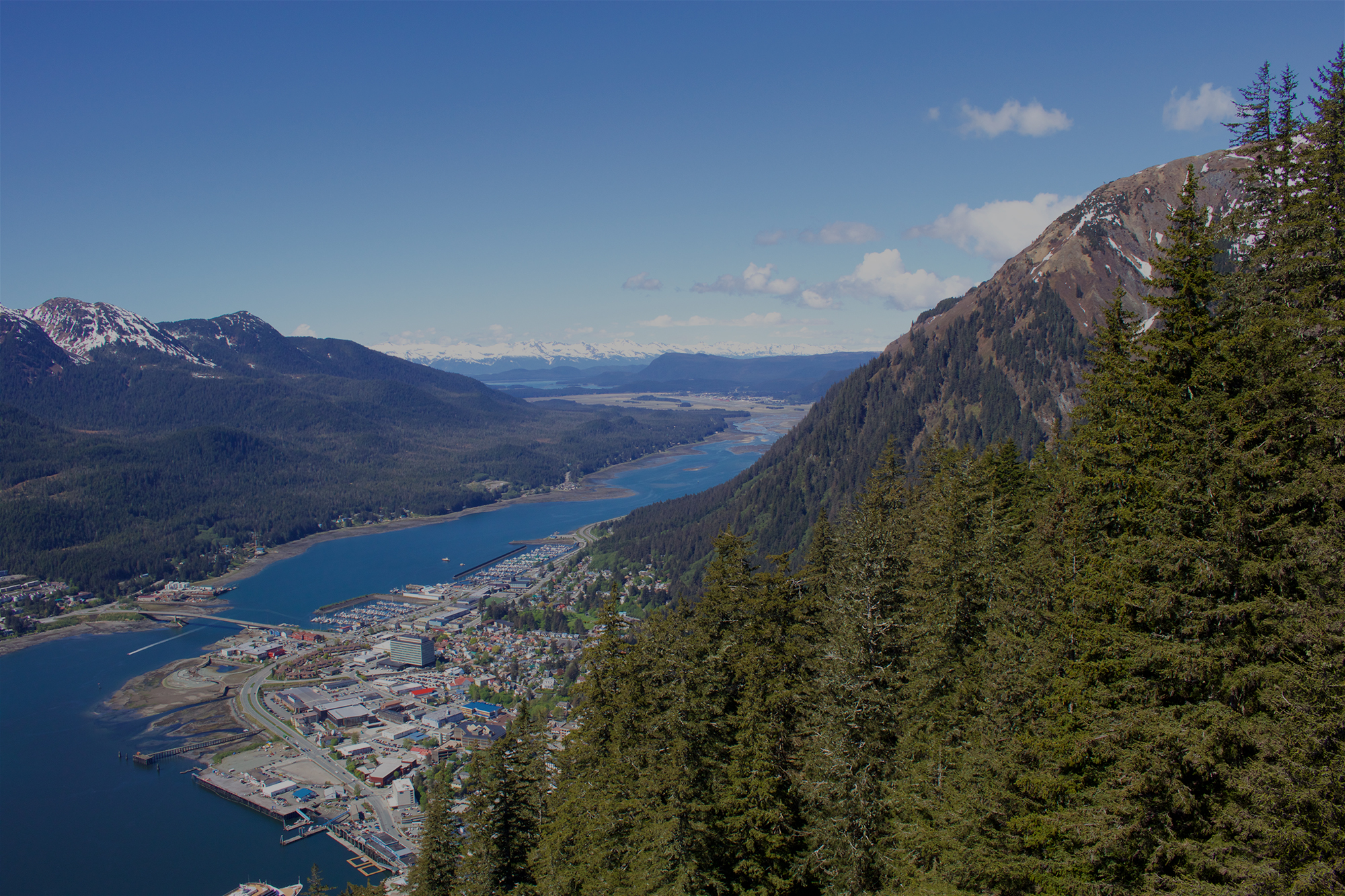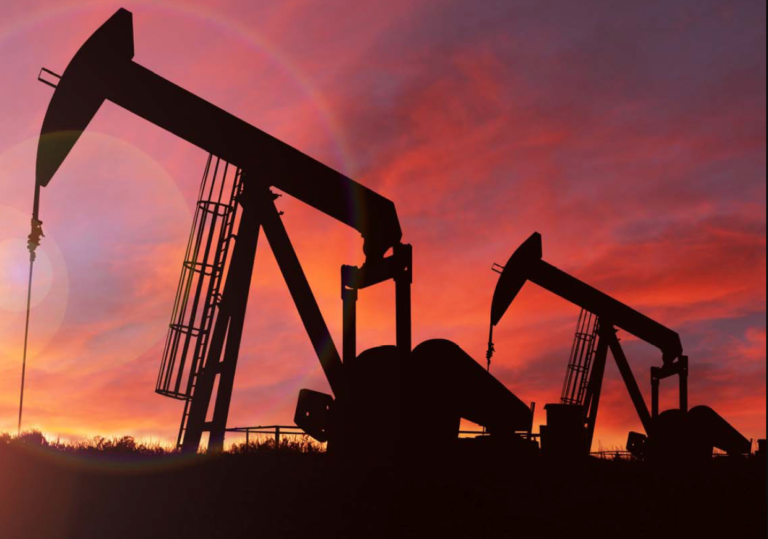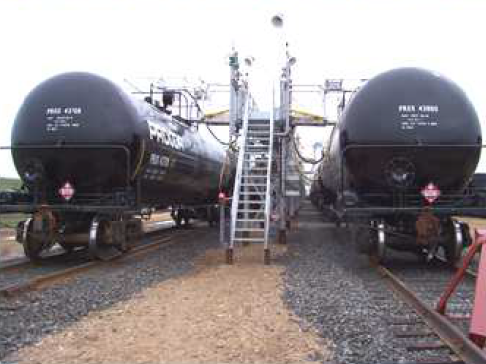Hydrogen-Focused Experience
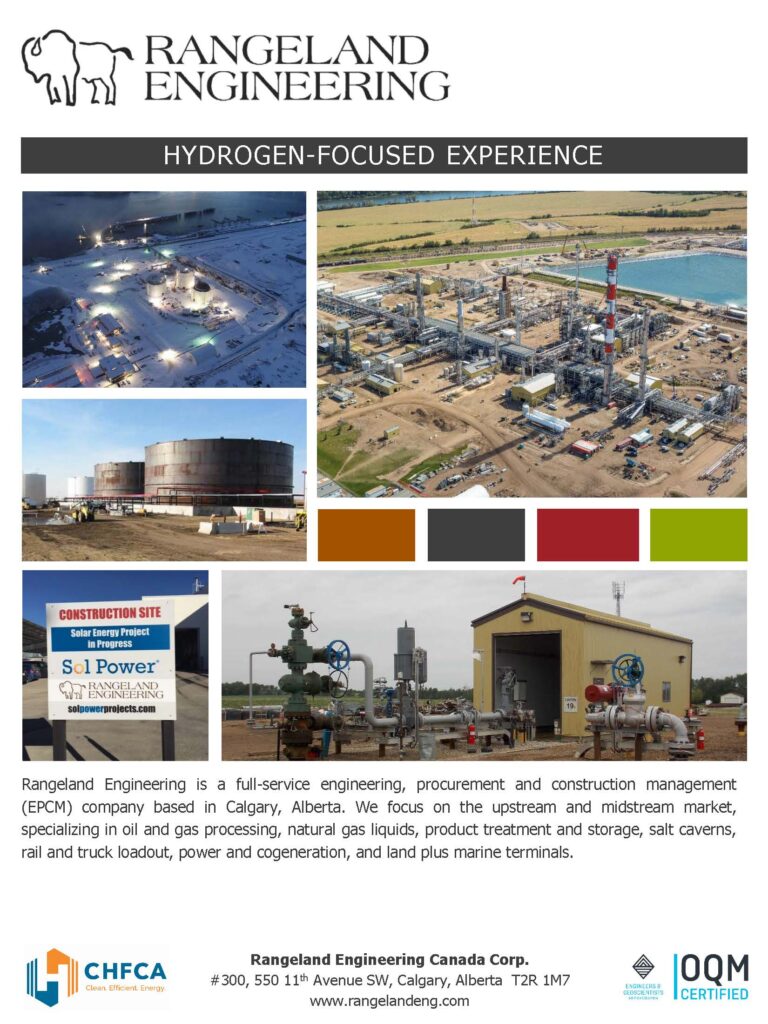
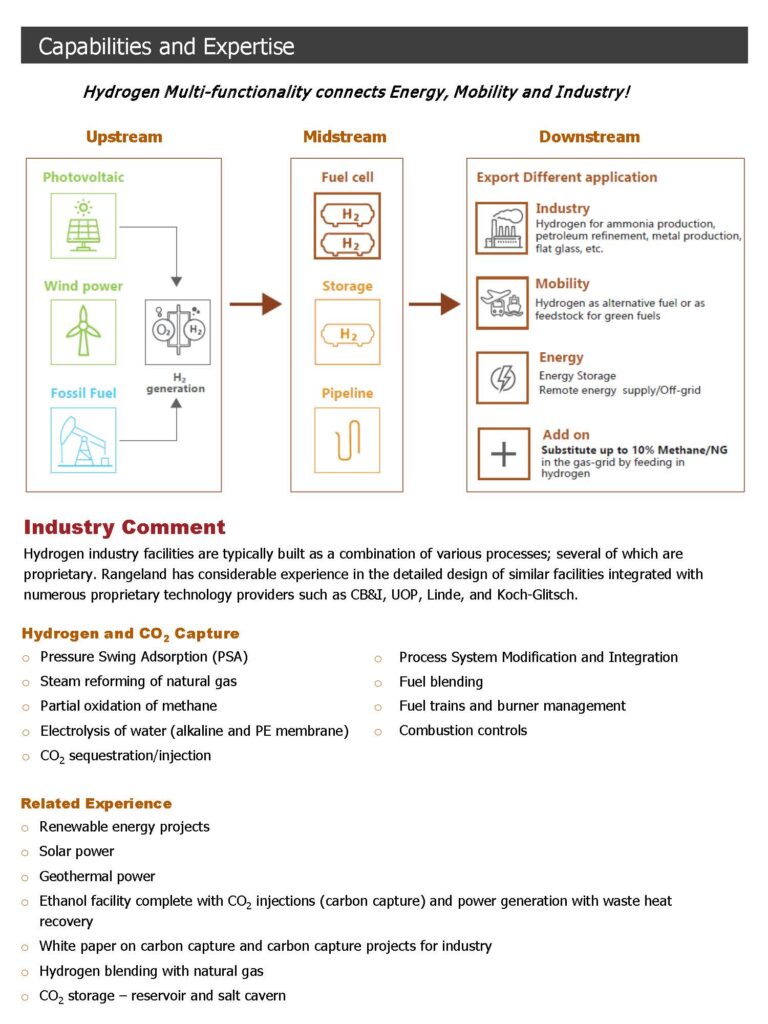
Industry Comment
Hydrogen industry facilities are typically built as a combination of various processes; several of which are proprietary. Rangeland has considerable experience in the detailed design of similar facilities integrated with numerous proprietary technology providers such as CB&I, UOP, Linde, and Koch-Glitsch.
Hydrogen and CO2 Capture
Pressure Swing Adsorption (PSA)
Steam reforming of natural gas
Partial oxidation of methane
Electrolysis of water (alkaline and PE membrane)
CO2sequestration/injection
Process System Modification and Integration
Fuel blending
Fuel trains and burner management
Combustion controls
Related Experience
Renewable energy projects
Solar power
Geothermal power
Ethanol facility complete with CO2injections (carbon capture) and power generation with waste heat recovery
White paper on carbon capture and carbon capture projects for industry
Hydrogen blending with natural gas
CO2storage –reservoir and salt cavern
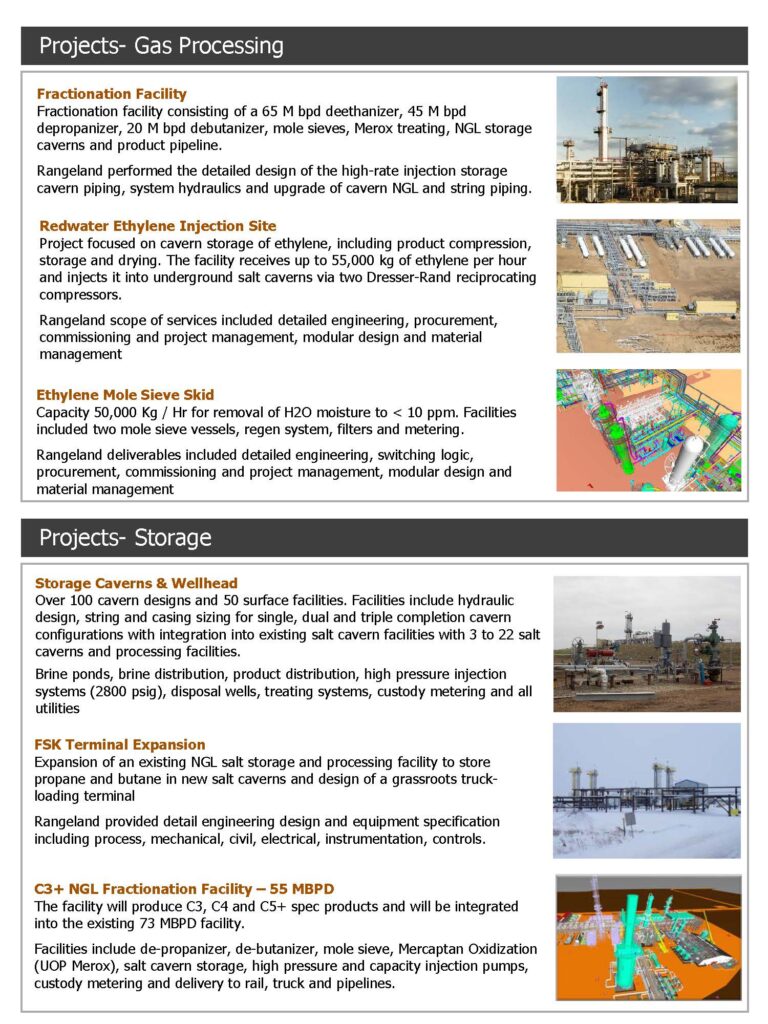
Fractionation Facility consisting of a 65 M bpd deethanizer, 45 M bpd depropanizer, 20 M bpd debutanizer, mole sieves, Merox treating, NGL storage caverns and product pipeline.
Rangeland performed the detailed design of the high-rate injection storage cavern piping, system hydraulics and upgrade of cavern NGL and string piping.
Redwater Ethylene Injection Site Project focused on cavern storage of ethylene, including product compression, storage and drying. The facility receives up to 55,000 kg of ethylene per hour and injects it into underground salt caverns via two Dresser-Rand reciprocating compressors.
Rangeland scope of services include detailed engineering, procurement, commissioning and project management, modular design and material management25px. Ethylene Mole Sieve Skid
Capacity 50,000 Kg / Hr for removal of H2O moisture to < 10 ppm. Facilities included two mole sieve vessels, regen system, filters and metering.
Rangeland deliverables included detailed engineering, switching logic, procurement, commissioning and project management, modular design and material management. Storage Caverns & Wellhead Over 100 cavern designs and 50 surface facilities. Facilities include hydraulic design, string and casing sizing for single, dual and triple completion cavern configurations with integration into existing salt cavern facilities with 3 to 22 salt caverns and processing facilities.
Brine ponds, brine distribution, product distribution, high pressure injection systems (2800 psig), disposal wells, treating systems, custody metering and all utilities
FSK Terminal Expansion of an existing NGL salt storage and processing facility to store propane and butane in new salt caverns and design of a grassroots truck-loading terminal
Rangeland provided detail engineering design and equipment specification including process, mechanical, civil, electrical, instrumentation, controls. C3+ NGL Fractionation Facility –55 MBPD The facility will produce C3, C4 and C5+ spec products and will be integrated into the existing 73 MBPD facility.
Facilities include de-propanizer, de-butanizer, mole sieve, Mercaptan Oxidization (UOP Merox), salt cavern storage, high pressure and capacity injection pumps, custody metering and delivery to rail, truck and pipelines.
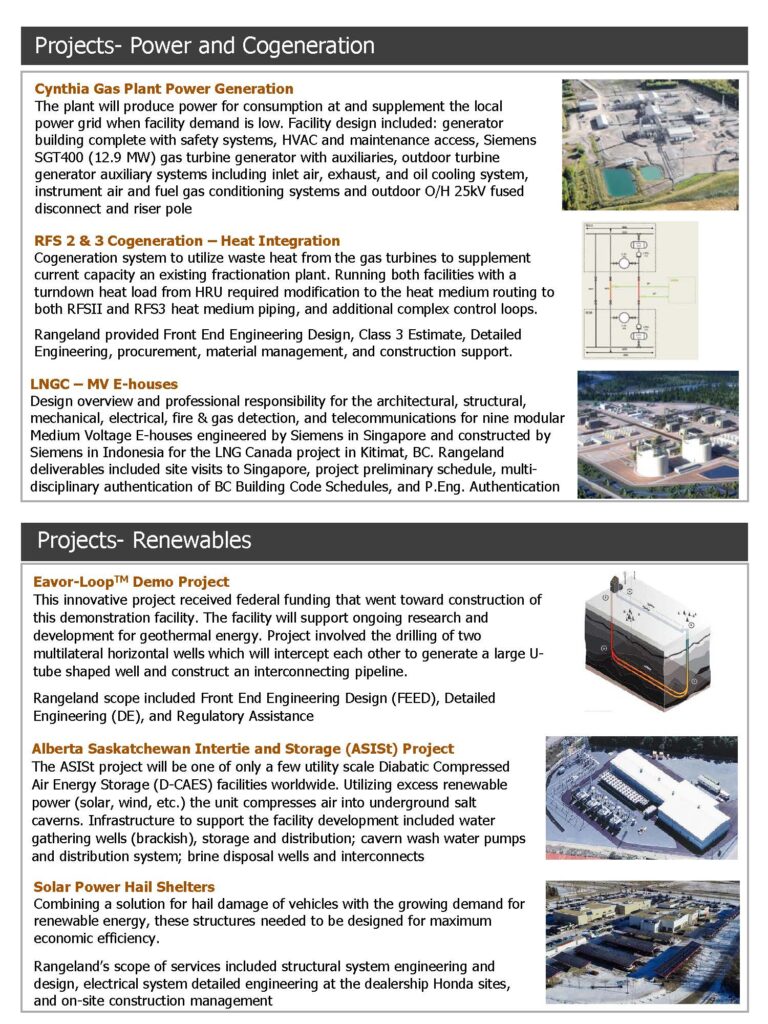
Cynthia Gas Plant Power Generation
The plant will produce power for consumption at and supplement the local
power grid when facility demand is low. Facility design included: generator
building complete with safety systems, HVAC and maintenance access, Siemens
SGT400 (12.9 MW) gas turbine generator with auxiliaries, outdoor turbine
generator auxiliary systems including inlet air, exhaust, and oil cooling system,
instrument air and fuel gas conditioning systems and outdoor O/H 25kV fused
disconnect and riser pole
RFS 2 & 3 Cogeneration – Heat Integration
Cogeneration system to utilize waste heat from the gas turbines to supplement
current capacity an existing fractionation plant. Running both facilities with a
turndown heat load from HRU required modification to the heat medium routing to
both RFSII and RFS3 heat medium piping, and additional complex control loops.
Rangeland provided Front End Engineering Design, Class 3 Estimate, Detailed
Engineering, procurement, material management, and construction support.
LNGC – MV E-houses
Design overview and professional responsibility for the architectural, structural,
mechanical, electrical, fire & gas detection, and telecommunications for nine modular
Medium Voltage E-houses engineered by Siemens in Singapore and constructed by
Siemens in Indonesia for the LNG Canada project in Kitimat, BC. Rangeland
deliverables included site visits to Singapore, project preliminary schedule, multidisciplinary
authentication of BC Building Code Schedules, and P.Eng. Authentication.
Eavor-LoopTM Demo Project
This innovative project received federal funding that went toward construction of
this demonstration facility. The facility will support ongoing research and
development for geothermal energy. Project involved the drilling of two
multilateral horizontal wells which will intercept each other to generate a large Utube
shaped well and construct an interconnecting pipeline.
Rangeland scope included Front End Engineering Design (FEED), Detailed
Engineering (DE), and Regulatory Assistance
Alberta Saskatchewan Intertie and Storage (ASISt) Project
The ASISt project will be one of only a few utility scale Diabatic Compressed
Air Energy Storage (D-CAES) facilities worldwide. Utilizing excess renewable
power (solar, wind, etc.) the unit compresses air into underground salt
caverns. Infrastructure to support the facility development included water
gathering wells (brackish), storage and distribution; cavern wash water pumps
and distribution system; brine disposal wells and interconnects
Solar Power Hail Shelters
Combining a solution for hail damage of vehicles with the growing demand for
renewable energy, these structures needed to be designed for maximum
economic efficiency.
Rangeland’s scope of services included structural system engineering and
design, electrical system detailed engineering at the dealership Honda sites, and on-site construction management.
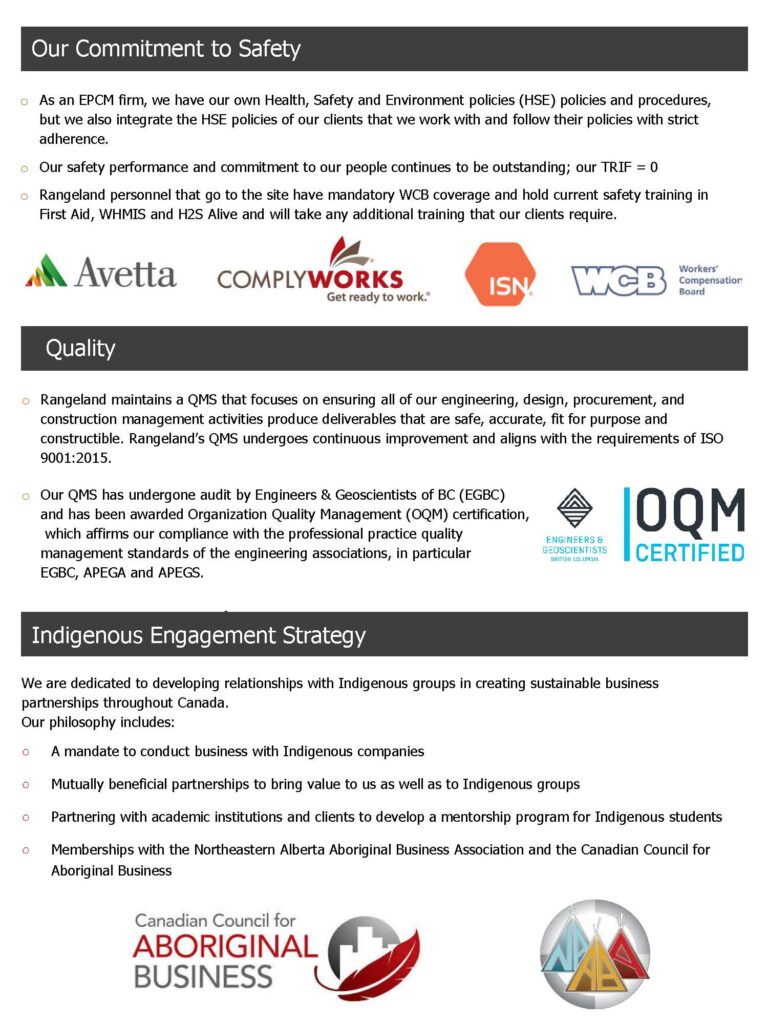
As an EPCM firm, we have our own Health, Safety and Environment policies (HSE) policies and procedures, but we also integrate the HSE policies of our clients that we work with and follow their policies with strict adherence.
Our safety performance and commitment to our people continues to be outstanding; our TRIF = 0
Rangeland personnel that go to the site have mandatory WCB coverage and hold current safety training in First Aid, WHMIS and H2S Alive and will take any additional training that our clients require.
Rangeland maintains a QMS that focuses on ensuring all ofour engineering, design, procurement, and construction management activities produce deliverables that are safe, accurate, fit for purpose and constructible. Rangeland’s QMS undergoes continuous improvement and aligns with the requirements of ISO 9001:2015.
Our QMS has undergone audit by Engineers & Geoscientists of BC (EGBC) and has been awarded Organization Quality Management (OQM) certification, which affirms our compliance with the professional practice quality management standards of the engineering associations, in particular EGBC, APEGA and APEGS.
We are dedicated to developing relationships with Indigenous groups in creating sustainable business partnerships throughout Canada. Our philosophy includes:
A mandate to conduct business with Indigenous companies
Mutually beneficial partnerships to bring value to us as well as to Indigenous groups
Partnering with academic institutions and clients to develop a mentorship program for Indigenous students
Memberships with the Northeastern Alberta Aboriginal Business Association and the Canadian Council for Aboriginal Business
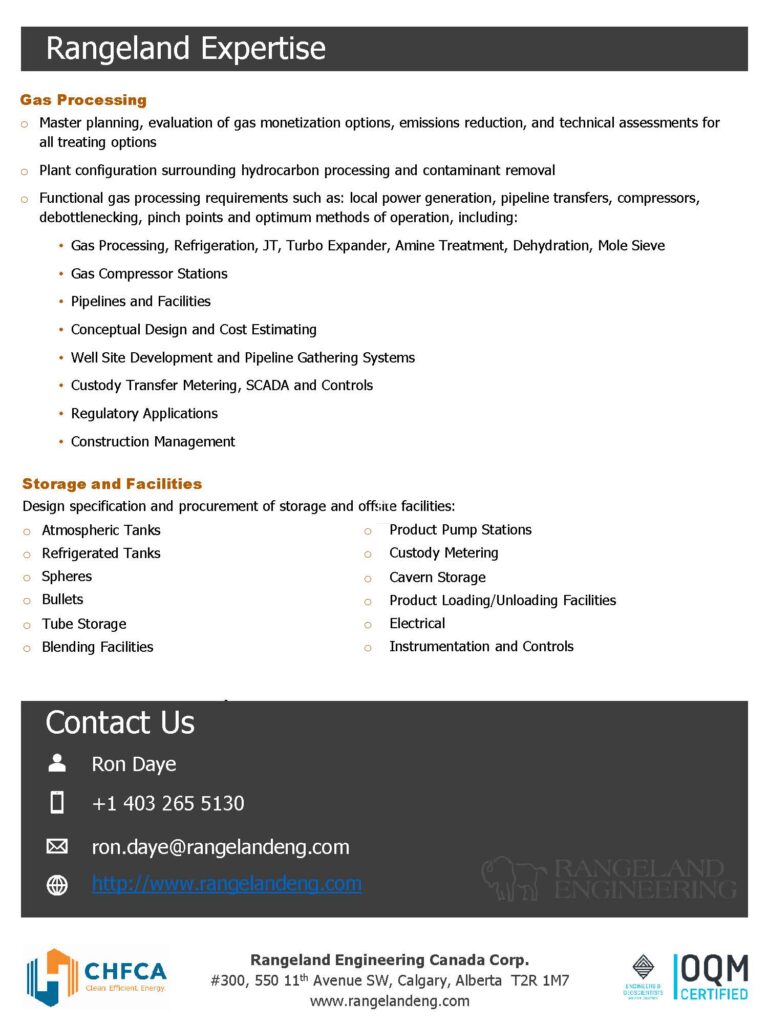
Gas Processing
Master planning, evaluation of gas monetization options, emissions reduction, and technical assessments for all treating options
Plant configuration surrounding hydrocarbon processing and contaminant removal
Functional gas processing requirements such as: local power generation, pipeline transfers, compressors, debottlenecking, pinch points and optimum methods of operation, including:
Gas Processing, Refrigeration, JT, Turbo Expander, Amine Treatment, Dehydration, Mole Sieve
Gas Compressor Stations
Pipelines and Facilities
Conceptual Design and Cost Estimating
Well Site Development and Pipeline Gathering Systems
Custody Transfer Metering, SCADA and Controls
Regulatory Applications
Construction Management
Storage and Facilities
Design specification and procurement of storage and offsite facilities:
Atmospheric Tanks
Refrigerated Tanks
Spheres
Bullets
Tube Storage
Blending Facilities
Product Pump Stations
Custody Metering
Cavern Storage
Product Loading/Unloading Facilities
Electrical
Instrumentation and Controls

